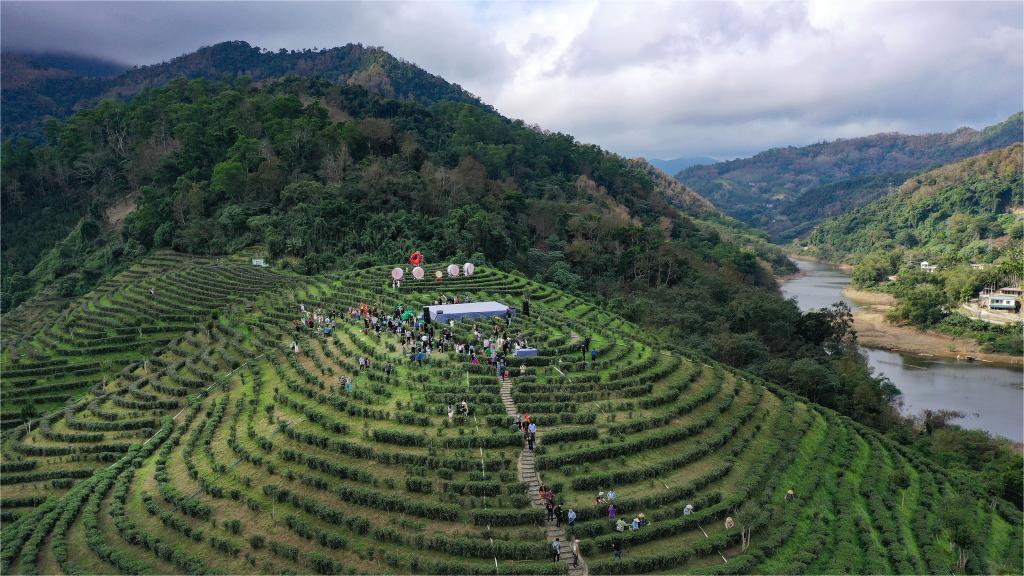China's annual output of forest food surpasses 200 mln tonnes
China's annual output of forest food has exceeded 200 million tonnes, with the per capita output of forest food reaching about 130 kilograms and leading the world, according to data from the National Forestry and Grassland Administration (NFGA).
China has more than 3.4 billion mu (226.7 million hectares) of forests and 8,000 kinds of woody plants, which contain rich food resources.
Chinese President Xi Jinping called for adopting an all-encompassing approach to food, and harvesting food from forests.
Forest food refers to food produced in forests or woodlands, including edible fruits, flowers, leaves, and branches.
Forest food includes products from economic forests like edible oils, fruits, nuts, vegetables, beverages and seasonings, as well as products in the under-forest economy, and fodder from forests to supplement the livestock's diets, said Gao Junkai, an NFGA official.
For example, the chestnut is a well-known representative forest food. Chestnuts can be eaten raw and cooked and can be used for medicine, said Shang Heli, head of the economic crops station of the bureau of agriculture and rural affairs in Kuancheng Manchu autonomous county, north China's Hebei Province.
Not long ago, the Kuancheng Traditional Chestnut Eco-Planting System in the county was inscribed by the Food and Agriculture Organization of the United Nations as a Globally Important Agricultural Heritage System (GIAHS). The planting area of Chinese chestnuts in the GIAHS site reached 800,000 mu.
"Forests help boost food production, and China has a huge potential for harvesting food from forests," Gao said.
Conservative estimates indicate that China has 500 to 1,000 economic forest tree species which can produce forest food, Gao added.
Developing economic forests and the under-forest economy through the scientific use of forests and forest land resources is conducive to enhancing China's food supply capacity, diversifying food sources, improving the quality of life, and accelerating the building of a diversified food supply system, Gao said.
The production of forest food does not occupy arable land, expanding the space for food production, while broadening channels for farmers to increase their income through the development of industries with distinctive rural characteristics, the official said.

A farmer sells persimmons at a market in Fuping county, Shaanxi Province, Oct. 29, 2023. (Photo/Xinhua)
The area of China's economic forests reaches about 700 million mu, ranking first in the world, with yield and output value reaching around 200 million tonnes and 2.2 trillion yuan ($309 billion), respectively. The annual output value of the under-forest economy exceeds 1 trillion yuan.
Around 20 percent of farmers' incomes in some forest and mountainous areas in the country come from forest products, and the proportion exceeds 60 percent in some major forest counties.
Gao explained that 726 former nation-level poverty-stricken counties, or 88 percent of the total, have developed economic forests, with the combined planting area, yield and output value exceeding 300 million mu, 60 million tonnes, and 500 billion yuan, respectively. The development of economic forests plays a big role in consolidating poverty alleviation outcomes and boosting rural revitalization.
The NFGA has rolled out multiple measures to promote the transformation, upgrading, and high-quality development of economic forests nationwide.
"We need to extend the woody grain and oil industrial chain, increase the total industrial output value, and promote the deep processing of green food like fruits and fungi to continuously enhance the supply capacity of ecological forest food," said Chen Xingliang, deputy director of the Chinese Academy of Forestry.
Fuping county in northwest China's Shaanxi Province, for instance, has extended its persimmon industrial chain, launching over 10 persimmon products like wine, vinegar, and beverages, according to Zhang Junwei, head of the county's forestry bureau. The output value of the whole persimmon industrial chain in the county reached 6.5 billion yuan.
The planting area of persimmon trees in Fuping has reached 360,000 mu, and the annual output of fresh and dried persimmons has hit 280,000 tonnes and 70,000 tonnes, respectively.
Photos
Related Stories
- Mainland food gains popularity in Taiwan region
- China's nutrition supply continues to improve in 2022: report
- Trending in China | Donghuo: Northeast China's winter delicacy
- Trending in China| Exploring the delights of traditional Chinese candy: Sugar melon
- China becomes world's largest food importer
- Trending in China| Milk fan: A delicious snack from SW China
Copyright © 2024 People's Daily Online. All Rights Reserved.









